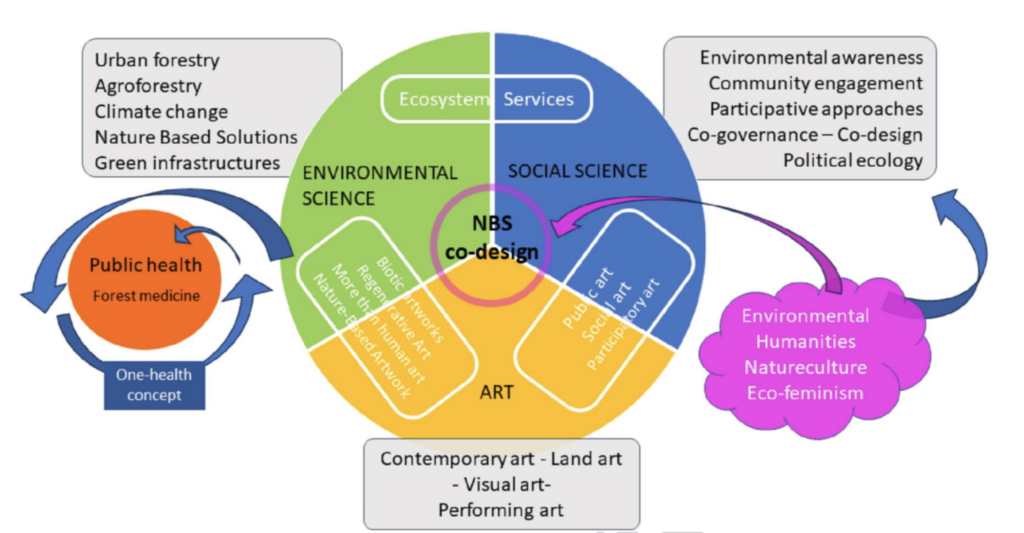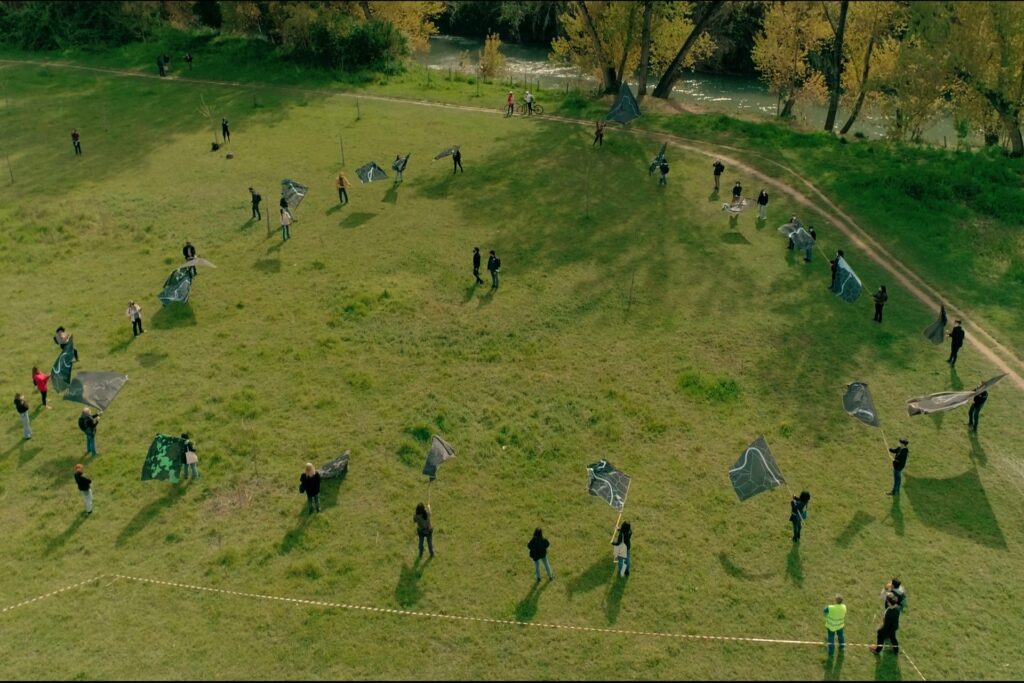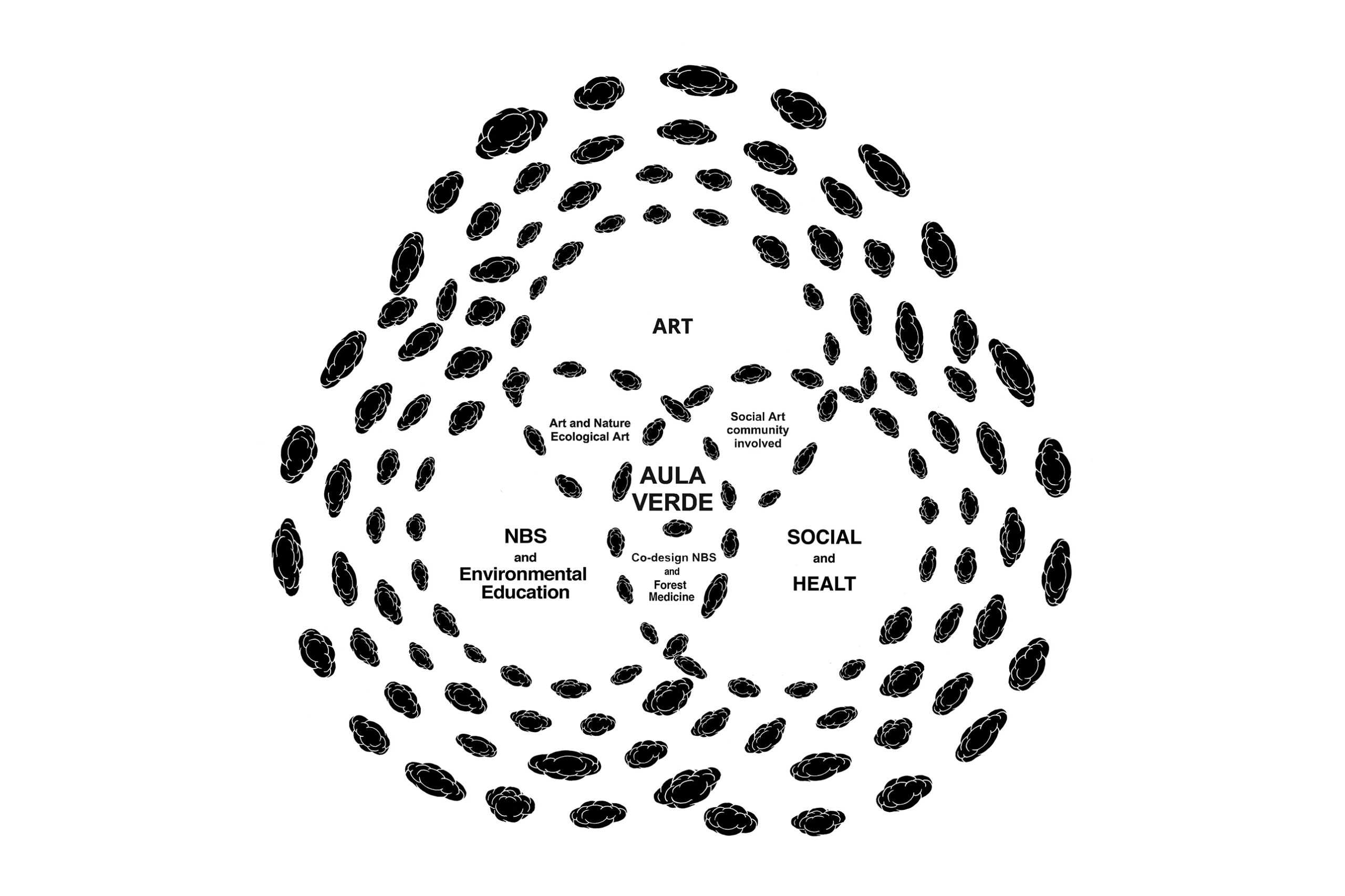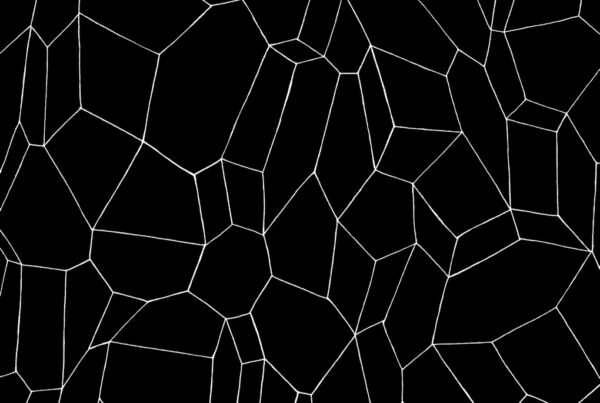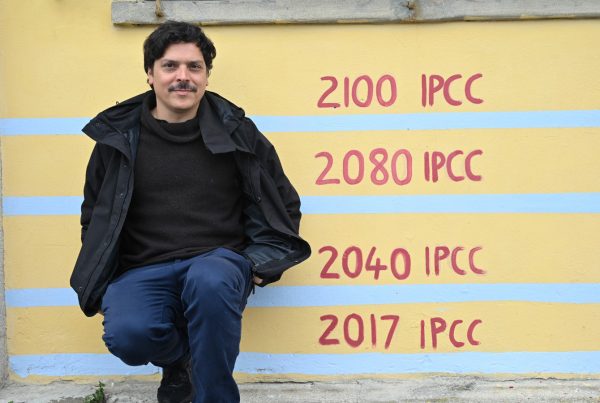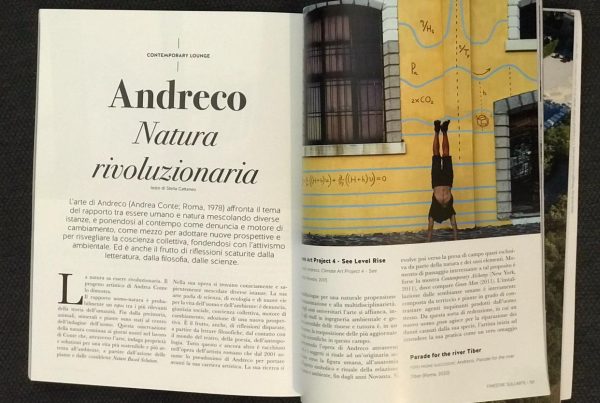Aula Verde – Tree Room: Art and Science for Climate Justice
Aula Verde (Tree Room) is an artwork that combines Nature-Based Solution, environmental humanities and social practice for Climate Justice. This is the aim of a work described in the journal Scientific Reports of Nature.
Andrea Conte, artist with a Phd in Environmental Engineering, director of Studio Andreco, with the collaboration of forest ecology experts from the National Research Council’s Institute for Terrestrial Ecosystems Research (CNR-IRET), create Aula Verde a contemporary art work and Nature-Based Solution (NBS), a space for socializing open to all. The design and implementation of the Aula Verde (Tree Room) has been described in a scientific article recently published in Scientific Reports of Springer Nature, the world’s most influential scientific publisher. The research demonstrates the importance of a participatory, multidisciplinary approach to highlighting the value of trees in fighting the climate crisis and for human and ecosystem well-being. Authors of the paper included also Qing Li, a Japanese physician and expert in forest medicine; Amanda Boetzkes, a theorist of art and ecology and Professor of Contemporary Art History and Theory at the University of Guelph (Canada); Rocco Pace from the Eurac Research Centre in Bolzano, Italy; Laura Passatore and Serena Carloni from CNR-IRET. The paper combined concepts of ecology and urban forestry with political ecology, humanities and regenerative art.
“The Aula Verde is an artistic and social method of reforestation, born from the desire to find collective actions for Climate Justice and the need to experiment with ecocentric design approaches as a response to anthropocentrism and extractivism” explains Andrea Conte (Andreco), visual artist and environmental engineer, founding partner of Futurecologies and the Climate Art Project. “We have created a bridge between art, science and political ecology, apparently distant disciplines, to address the complexity of contemporary urgencies and to rethink the urban spaces. The involvement of citizens and local associations is crucial to the success of the project,” continues the artist that conceptualize this definition of Aula Verde.
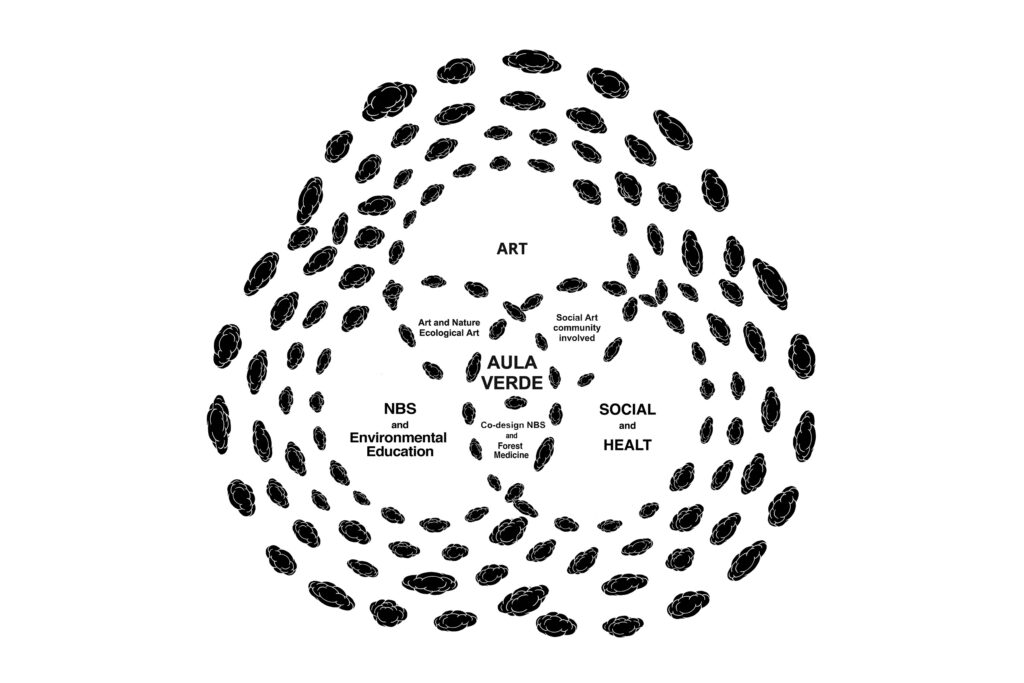
The first Aula Verde, created at the beginning of 2021 in the Valle dell’Aniene Nature Reserve in collaboration with Insieme per l’Aniene and a group of citizens for the Climate Art Project’s Flumen project, is made up of concentric circles of trees arranged to give the impression of being in a space completely immersed in nature. “The species of trees have been chosen on the basis of the ecological conditions of the site and in order to contribute to the local environment,” explains Laura Passatore, CNR IRET researcher and study coordinator. “In fact, they are willows and white poplars, plants capable of moving very large volumes of water. Situated close to the banks of the urban section of the Aniene River, they have the potential to dispose of flood waters from heavy rains,” continues the scientist. Special software was used to measure the ecosystem services resulting from the work. It has been estimated that, when mature, the trees in the Aula Verde will be able to intercept and return to the atmosphere 48,000 litres of rainwater per year, and that in 50 years they will be able to absorb up to 48 tonnes of carbon and 11 kg of air pollutants, including ozone, nitrogen dioxide and PM10.
In addition to the strictly environmental benefits, the study also looked at “Cultural Ecosystem Services”, or the non-material benefits people derive from interacting with nature. The most important of these were found to be the spiritual, emotional and aesthetic values and sources of inspiration that flow from the Aula Verde to those who visit it. “Medical research has correlated forest visitation with preventive and curative effects on lifestyle-related diseases,” writes Qing Li, an immunologist at Nippon Medical School, in the article. “Forest medicine has shown how the practice of shinrin-yoku (forest bathing) strengthens immune functions, lowers blood pressure and heart rate, reduces hormones related to physical and mental stress, and has preventive effects on cancer, hypertension and depression,” she points out.
“These data represent only the tip of the iceberg of all the benefits derived from the complex interactions between plants and people, which are difficult to describe in numerical terms alone. The direct experience of contact with trees, as in the Aula Verde, can probably communicate the close relationship between trees and humans better than any number of figures and words,” continues Laura Passatore.
Another peculiarity of the Aula Verde method described in the article is that the implementation phase takes place through a collective performance in which citizens carry flags dedicated to the landscape and ecosystems. “These gatherings are political in nature, and they change public spaces through the occupation of a collective organisation.
In this respect, the practices at stake in Aula Verde could be considered a form of ecological activism. The artist Andrea Conte (Andreco) also seeks to build public knowledge about the rivers and other urban ecologies; knowledge that crosses the scientific and the social, and which refuses to allow these to be divided into specialised expertise. The Flumen project through art aims to create environmental and social agency. In the occasion of the realisation of Aula Verde Aniene, part of the Flumen program, dedicated to rivers and riparian ecologies, the scientific, political and artistic motivation of the project was also shared with the participants.
In the era of climate change, this recourse to the transformative power of art also marks an epochal shift towards an age of political ecology. It is in this vein that we discuss Aula Verde across the sciences, the critical history of art, and the politics of climate change.” conclude Amanda Boetzkes.
In November 2021 another Aula Verde have been created by Studio Andreco and the Climate Art Project at Lake Bullicante in Rome and in march 2023 in Puglia for the Xfarm Land Art Park and other are scheduled for the future.
For further information about AULA VERDE: https://www.andreco.org/portfolio/aula-verde-aniene-river/
Information about FLUMEN: https://www.climateartproject.com/flumen/
Article https://www.nature.com/articles/s41598-024-51611-9
